Sunrise: The Masters of Cinema Series
Released at an interesting juncture in the development of motion pictures, Sunrise is still recognised as a towering cinematic achievement, with film critic John Walker placing it at #29 in Halliwell's Top 1000 Films and the second highest placed silent film (behind Dreyer's The Passion of Joan of Arc at #23). In the late 1920s, silent films were on the way out due to the success of 'talkies', with The Jazz Singer introducing audiences to films where the characters spoke in 1927. The same year, William Fox brought renowned German director F. W. Murnau over to America and gave him an unprecedented contract in which Murnau had complete creative freedom. Murnau had made his name with Nosferatu (Nosferatu, eine Symphonie des Grauens, 1922), The Last Laugh (Der letzte Mann, 1924) and Faust (Faust - Eine deutsche Volkssage, 1926) and Fox wanted a great American film.
Based on the story by Hermann Sudermann and adapted for the screen by Carl Meyer, Sunrise was subtitled 'A Song of Two Humans' (just as Nosferatu was subtitled 'A Symphony of Horrors') and was designed to be universal in its scope and appeal. To help this process, the characters had no names and the locations are never identified - it is a story that could happen to anyone, anywhere. The tale begins at the start of summer when people from the city travelled to the countryside for a holiday and one woman, identified only as 'The Woman From The City' stayed behind and seduced a local farmer. Smitten by the glamorous stranger, he begins to neglect his wife and sell livestock and produce to keep her entertained. One day she asks him to go with her to the city and tells him what to do with his wife: take her out on the lake, kill her and throw her in then stage a boating accident. The man goes through with this, preparing for the aftermath by stashing a bundle of bulrushes in the boat for him to use as floatation and is wracked by doubt and insecurities. When they are on the water, he steps forward to strangle his wife but can't do it and continues the journey to the city where he tries desperately to persuade her that he is not dangerous, no longer wants to kill her and is still in love with her. During a day in the city, they are gradually reconciled and reaffirm their love but then there is the small matter of the return journey at night and during a storm.
Murnau took all of his experience working in the expressionist era and applied it to a story that contains humour, pathos and romance - a world away from the dark environments that he explored in his native country. The film is a triumph of storytelling and directorial flair with a beautiful and heart-warming tale of love brought to life by one of cinema's greatest directors who created some incredible sets with the help of cinematographers Charles Rosher and Karl Struss. As someone who studied expressionism at university for a Master's degree, I found Sunrise to be an incredible film when I saw it a couple of years ago but appreciated it much more this time, picking out the use of light, shadow and composition; Murnau's use of double and even triple exposure leads to some wonderful imagery, particularly when the couple walk through the town and it disappears only to be replaced with a wood. Studying early German cinema is no prerequisite for enjoying Sunrise as it is such a wonderful story with universal appeal and terrific performances by Janet Gaynor and George O'Brien as the married couple.
Eureka released this on DVD in 2003 with a much inferior picture but this re-release is a massive step up with the visuals and contains an extras package that is absolutely stunning. When I review a disc, it usually requires only one watch or two if there is a commentary. As with other films of this period, there are various prints around of different quality so the inclusion of both the American Movietone and the Czech version means two watches, but the Movietone has two scores and a commentary so I watched Sunrise four times in two days (not that I am complaining!). The film is a masterpiece of the silent era and, as a horror fan I'll always love Nosferatu, this is a phenomenal film that is worth the time and money of anyone with an interest in cinema, however fleeting.
The Disc
Extra Features
As I mentioned on the last page there is a commentary on the Movietone version by AFI cinematographer and film historian John Bailey who knows the film very well and provides an accessible and informative look at the history and making of Sunrise. There is no dead air and he only occasionally lapses into descriptive mode, spending most of his time analysing events on screen and providing information about the cast, crew and locations.
The alternative score composed by Timothy Brock and performed by the Olympic Chamber Orchestra is a fine piece of work that is very different to the Movietone score. Personally I prefer the original as I find it presents the emotions better and just seems to 'fit' the film - I liked Brock's work with the alternate scores for Nosferatu, Faust and The Last Laugh but always seem to gravitate towards the original music. Every screening of this would have been accompanied by music of some sort, whether it was the Movietone score or a man at a piano and every musician will have a different interpretation of events on screen - Brock's is a variation on that written in 1927 but isn't worse, just different.
Watching the film so many times in such a short space of time means that when you see an alternate version you can see the differences as the film is fresh in your mind. This was the case watching the Czech version which is presented in a different aspect ratio (1.37:1 compared to 1.20:1 for the Movietone) and there is some conjecture why this is. Some speculate that the Movietone was cropped for the soundtrack but looking at the film I believe that there were too cameras used with different ratios as there are different angles for the same shot. With Czech intertitles this also has a different cut with some scenes removed or chopped down and a slightly different ending, showing The Woman From The City leaving. It is superior quality but both are terrific and, just as with the score, I prefer the Movietone version as there is slightly more humour, particularly in the scene in the barbershop.
One of the major tragedies of European cinema was Murnau's death in a car crash aged just 42 and we never knew what he could have gone on to achieve in the sound era. One of the projects he finished was a film about four acrobats adopted by a clown, called the 4 Devils. Like so many films from the 1920s, the original negative appears to be lost and Janet Bergstrom made a visual essay about the film based on the screenplay, photos from the shoot and other material. It is an enthralling 40 minute piece that will be of great interest to any fan of Murnau's work.
There are 9 minutes of material called 'outtakes' on the menu but these aren't outtakes in the modern sense but different and extended scenes introduced with title cards. John Bailey again provides a commentary but doesn't appear to have the title cards as he doesn't know what the footage is about so doesn't add much.
As well as the trailer, the set comes with a 20 page booklet that is a good read, not the best that The Masters of Cinema Series has ever released, but one that contains information on the transfer to Blu-ray, the different versions and the restoration.
The disc comes with some hidden features that aren't mentioned on the box. If you put the disc in your computer and find the Bonus folder on the disc there is a PDF file containing the shooting script, one Word document with Carl Mayer's original screenplay and another with the screenplay for 4 Devils.
The Picture
As described in the accompanying booklet, there was the temptation to digitally scan the film and apply DNR, removing all the scratches and giving the movie an artificial look, but thankfully this was resisted so the film looks like it would projected in a cinema. I have never seen a film this age look this good and the cinematography and direction are quite sublime. Sunrise looks its age with scratches but the film doesn't suffer as they are slight and are expected from a film now in its ninth decade.
Obviously the 1080p picture looks much better than in standard definition and this is really a benchmark release for silent films. See page 3 for some comparisons between the DVD and BD.
The Sound
Both versions of the film have a Dolby TrueHD 2.0 soundtrack but they are presented as they were, with the Movietone score in mono and Timothy Brock's in stereo. All the soundtracks are beautifully clear and benefit from the high bitrate that Blu-ray offers, being completely clear from any hiss or crackles.
Final Thoughts
Sunrise is a great film and one that deserves the treatment that Eureka have lavished on it; it's hard to place it in Murnau's oeuvre as he created such magnificent films in his short career that each has a claim to be the best he made.
This is one of the finest Blu-ray discs I have seen and whilst it is hard to compare it to something like Cars or Baraka, Sunrise has been such a comprehensive makeover that it deserves a home on any self respecting film fans shelf. The DVD set is excellent but if you have the equipment, this is a fantastic release and is up there for disc of the year.
Comparison Shots
Blu-ray (Czech Version)

DVD (Czech Version)
Blu-ray (Czech Version)
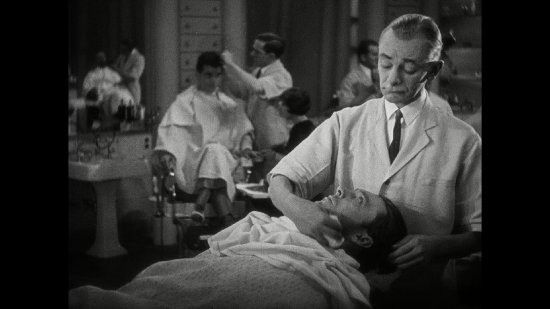
DVD (Czech Version)

Blu-ray (Movietone Version)
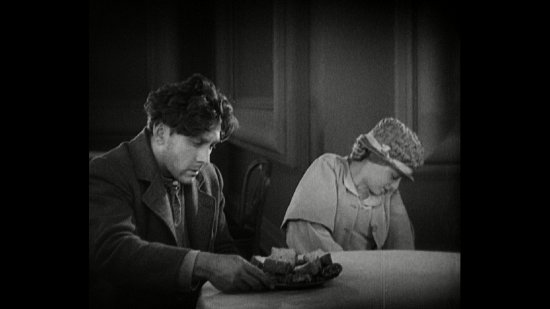
DVD (Movietone Version)
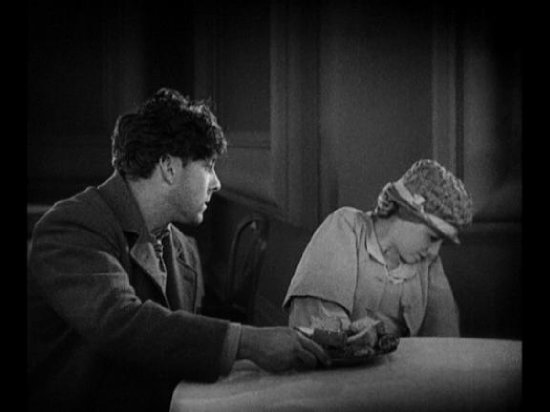
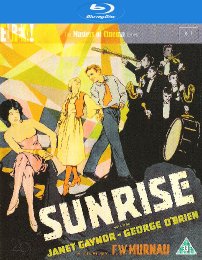
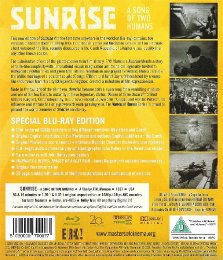
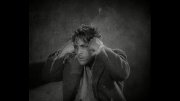
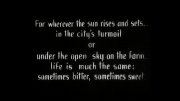
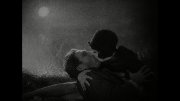


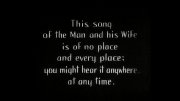
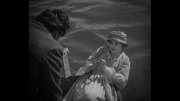
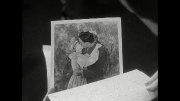
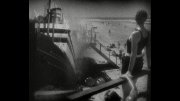

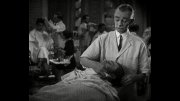
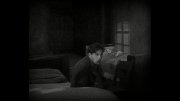
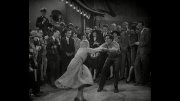
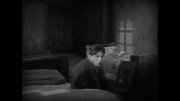




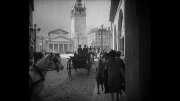













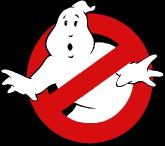



















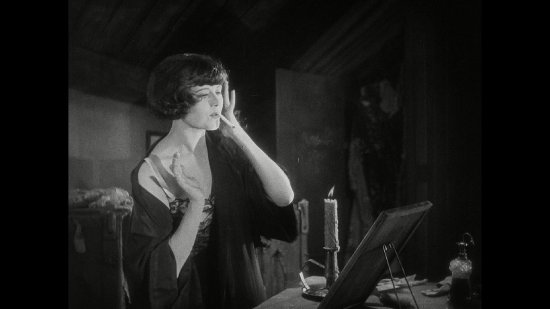
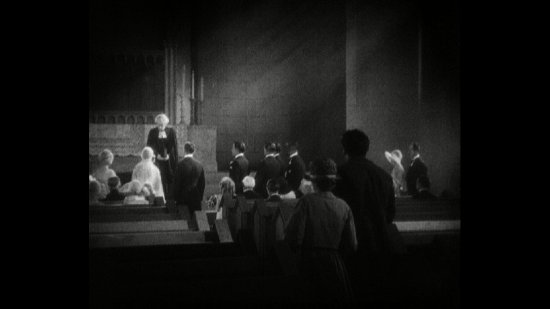


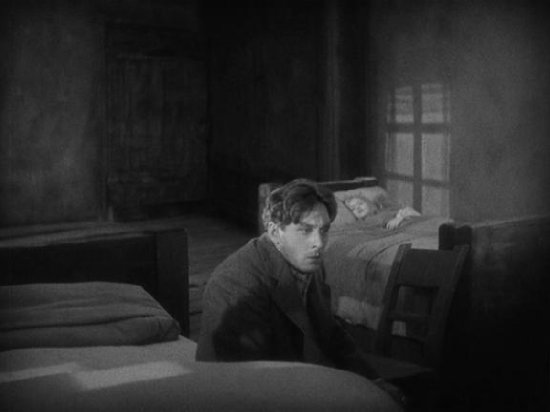
Your Opinions and Comments
I did get sent the DVD but I used the screenshots from the DVD that you set up and shots from the BD to match. The HD picture is much better, especially on the Czech version which is exceptionally clear.